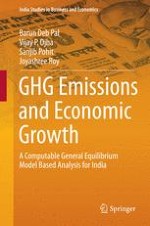2015 | Buch
GHG Emissions and Economic Growth
A Computable General Equilibrium Model Based Analysis for India
verfasst von: Barun Deb Pal, Vijay P. Ojha, Sanjib Pohit, Joyashree Roy
Verlag: Springer India
Buchreihe : India Studies in Business and Economics
